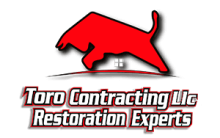Imagine this: You wake up to a gloomy morning in Maryland. The sky is heavy with dark clouds, and the relentless rain pounds against your windows. Outside, leaves have fallen in a thick, colorful blanket, clogging gutters and covering your yard. It’s the quintessential Maryland autumn, beautiful but challenging, especially when it comes to your home’s roofing. Have you ever wondered how well your roofing can handle the intersection of heavy rain and those incessant falling leaves? This season, preparing your home’s roofing to withstand these elements is more crucial than ever.
In this article, we will explore the essentials of roofing in Maryland and show you how to safeguard your biggest investment, your home, from the typical seasonal onslaught of heavy rains and leaf debris. Whether you’re a new homeowner or haven’t given much thought to roofing maintenance, this guide will help you understand what steps to take to keep your roof intact and your home dry.
Roofing in Maryland isn’t just about having a solid structure overhead; it is about resilience. Maryland experiences a unique climate, with Autumn bringing frequent showers paired with a torrent of falling leaves that can quickly compromise your roofing’s integrity when left unattended. These leaves, while picturesque as they drift down, often accumulate and block your gutters, creating pools of water that can leak into your home, cause mold, or even promote wood rot.
So, what can you do? First, we will discuss the importance of regular roof inspections, especially before the heavy rains begin, to spot vulnerabilities like missing shingles, damaged flashing, or clogged gutters. Next, we will delve into the strategies for effective gutter maintenance, ensuring that rainwater flows freely, rather than overflowing and damaging your roof’s edges. We’ll also highlight roofing materials best suited for Maryland’s wet fall season, and how to reinforce your roof to prevent damage from both moisture and debris.
By the end of this read, you’ll be equipped with actionable knowledge: how to inspect your roof like a pro, the best ways to handle the relentless Maryland leaves, and proactive approaches to weatherproofing against the seasonal rains. Roofing in Maryland is an ongoing task, but one that brings peace of mind when you know your home is protected.
Stay with us, and let’s dive into the world of roofing , your first defense line against the whims of Maryland’s fall weather. This season, don’t just watch the rain and leaves come down; prepare and protect!
Key Takeaways
Roofing in Maryland faces unique challenges due to heavy rain, falling leaves, and seasonal temperature shifts.
Regular inspections, gutter cleaning, and trimming overhanging branches are essential to prevent leaks and structural damage.
Quality materials like impact-resistant shingles and waterproof underlayment provide stronger protection and energy efficiency.
Proper ventilation and insulation help reduce moisture buildup, extending your roof’s lifespan.
Investing in preventive maintenance ensures long-term durability, cost savings, and peace of mind year-round.
Why Roofing in Maryland Is More Important Than You Think
When it comes to protecting your home, roofing is one of the most critical components, especially in Maryland, where seasonal weather can be unpredictable and harsh. Roofing is not just about putting a cover over your head; it’s about safeguarding your entire home from the elements, preserving your property’s value, and ensuring your family’s safety. Understanding roofing’s role in Maryland’s climate prepares homeowners for the challenges of heavy rain and falling leaves that dominate the season.
Maryland experiences an average annual rainfall of approximately 43 inches, with heavy showers frequently testing the resilience of residential roofs. The state’s geography, ranging from coastal regions to mountainous areas, creates varied weather patterns, contributing to frequent storms and damp conditions. This makes it essential for homeowners to have a roof that can withstand these environmental stressors.
One of the biggest threats roofing faces in Maryland during the season is the combination of heavy rain and falling leaves. When leaves accumulate on gutters and roofs, they can trap moisture, leading to leaks, mold growth, and even structural damage. According to the National Roofing Contractors Association, clogged gutters and neglected roofing maintenance account for more than 60% of roofing failures annually in regions with heavy foliage.
Consider the story of the Johnson family from Baltimore. Last autumn, after a particularly intense storm combined with weeks of unattended leaf buildup, their roof developed multiple leak points. The resulting water damage extended beyond the ceiling, affecting the home’s electrical wiring and interior walls, costing them over $10,000 in repairs. This real-life example highlights how critical it is to prioritize roofing maintenance in Maryland’s rainy and leafy seasons.
Beyond protection, a well-maintained roof improves energy efficiency. Maryland winters can be cold and snowy, and a compromised roof can lead to significant heat loss. Proper roofing materials and maintenance create a weather-tight barrier that saves on heating bills, an important benefit as energy prices fluctuate.
In summary, roofing in Maryland is far more important than many homeowners realize. It’s your first and best defense against heavy rain, persistent moisture, and the natural debris from Maryland’s abundant trees. Preparing your roof before the season starts not only prevents costly repairs but also provides peace of mind in facing the changing climate. As the saying goes, “An ounce of prevention is worth a pound of cure,” and nowhere is this more true than in Maryland roofing.
How to Apply Roofing Best Practices Step by Step for Maryland’s Rainy and Leafy Season
Preparing your home’s roofing for Maryland’s heavy rain and abundant falling leaves is essential to maintaining a strong, durable shelter. Roofing in Maryland requires careful attention to prevent water damage, clogged gutters, and unexpected leaks. Follow this detailed step-by-step guide to ensure your roof stays in peak condition throughout the season.
- Inspect Your Roof Thoroughly
Begin by conducting a detailed inspection of your roof. Look for damaged, loose, or missing shingles, as these can allow water to seep in during heavy rains. Pay close attention to areas around chimneys, vents, and skylights where leaks often start.
– Use binoculars or a drone to inspect hard-to-reach places.
– Check for signs of moss or algae growth, which can trap moisture.
– If you’re uncomfortable inspecting the roof yourself, consider hiring a professional roofing contractor experienced in Maryland’s climate.
Example: A Maryland homeowner discovered several cracked shingles after a strong thunderstorm by simply walking safely around his house and using binoculars, preventing costly repairs later.
- Clear Gutters and Downspouts
Falling leaves are a common problem during Maryland’s autumn, often clogging gutters and downspouts. Blocked gutters cause water to overflow and saturate roof edges and foundations, increasing the risk of damage.
– Remove all leaf debris and check for any blockages.
– Flush pipes with a garden hose to confirm water flows freely.
– Install gutter guards to minimize future clogging.
Pro tip: Schedule gutter cleaning at least twice during the season, once before the first major leaf fall and once afterward.
- Trim Overhanging Branches
Overhanging tree branches pose a twofold threat to roofing in Maryland: they drop leaves directly onto your roof and can damage shingles during storms.
– Identify branches touching or hanging close to your roof.
– Hire an arborist or safely trim branches to maintain a buffer zone around your home.
– This action also improves sunlight exposure, reducing moss growth.
- Check and Repair Flashing
Flashing, the thin metal strips placed at joints and valleys on your roof, is critical for preventing leaks. Maryland’s rainy season tests its integrity, so ensure it remains intact.
– Inspect flashing around chimneys, vents, and skylights.
– Look for rust, cracks, or separation from the roof.
– Seal any gaps or replace damaged flashing immediately.
- Ensure Proper Attic Ventilation
Poor attic ventilation traps moisture, causing roof deck damage and mold growth. Roofing in Maryland therefore benefits greatly from proper airflow.
– Inspect vents to verify they aren’t blocked by debris or insulation.
– Consider adding ridge vents or soffit vents to improve air circulation.
– A well-ventilated attic also helps regulate indoor temperature and energy efficiency.
- Apply Protective Roof Coating
Adding a waterproof roof coating can provide an extra layer of protection against Maryland’s heavy rains.
– Choose a high-quality elastomeric or silicone-based coating compatible with your roofing material.
– Clean the roof surface thoroughly before application.
– Apply the coating evenly using a sprayer or brush, covering all seams and vulnerable areas.
Visual Tip: Before and after photos of your roof with and without protective coating can help track maintenance progress.
- Schedule a Professional Roof Maintenance Check
Even with regular DIY maintenance, roofing in Maryland benefits from an annual professional checkup.
– Professionals can spot hidden problems, such as underlayment damage or structural issues.
– Ask for a detailed report including recommended repairs.
– Early detection helps avoid emergency repairs during stormy seasons.
By following these roofing best practices step by step, Maryland homeowners can safeguard their properties against the challenges brought by heavy rains and falling leaves. Regular upkeep not only extends the lifespan of your roofing but also provides peace of mind knowing your home is well protected all season long.
Tips for Roofing in Maryland: Prepare Your Home for Heavy Rain and Falling Leaves This Season
✅ Inspect your roof regularly: Check for missing or damaged shingles to prevent leaks during heavy rains.
✅ Clean gutters and downspouts: Remove leaves and debris to ensure proper water flow and avoid water damage.
✅ Trim overhanging branches: Prevent branches from damaging your roof or clogging gutters with falling leaves.
✅ Invest in a quality waterproof underlayment: Adds an extra layer of protection against water infiltration.
✅ Install gutter guards: Helps reduce the amount of leaves entering gutters and minimizes maintenance.
✅ Check flashing around chimneys and vents: Ensure these areas are sealed to avoid leaks from heavy rain.
✅ Inspect attic ventilation: Proper airflow reduces moisture buildup that can lead to mold and roof deterioration.
✅ Schedule a professional roof inspection: Especially before the rainy season, to address potential problems early.
💡 Extra tip: Consider upgrading to impact-resistant shingles to withstand Maryland’s stormy weather better.
❌ Avoid procrastinating roof repairs: Small issues can worsen with heavy rain and lead to costly damages.

Key Concepts
When diving into the world of roofing, especially within the unique seasonal context of Maryland, it’s essential to grasp certain foundational ideas that affect both the integrity and longevity of your roof. Picture your roof as a resilient shield standing guard over your home, tirelessly protecting it from the onslaught of nature’s elements. Just as a knight relies on the quality of its armor, homeowners must understand the core principles of roofing to ensure their shelter weathers the storms and seasonal changes gracefully.
The Roof as a Living System
A roof is not simply a static surface; it’s a living system that interacts dynamically with environmental factors. Consider the roofing structure as a layered ecosystem where every component, from shingles and underlayment to gutters and vents, plays a pivotal role, similar to the organs of a living body working in harmony. In Maryland’s climate, where heavy rain collides with an abundance of falling leaves, this system confronts compounded stressors that test its resilience daily.
Imagine autumn as a season of renewal but also congestion. Leaves cascade down like tiny soldiers en masse, clogging gutters and water channels, which in turn disrupts the natural flow of water. This congestion can create pockets of moisture, analogous to how a dam accumulates water behind it, increasing pressure on the roofing system. Understanding this interplay highlights why a roof’s drainage and ventilation systems are just as critical as its protective layers.
The Mechanics of Water Shedding
Central to roofing is the concept of water shedding. A roof’s slope, materials, and installation techniques combine to channel water safely off the structure, much like the way leaves on a tree branch guide rainwater to the ground. In Maryland, heavy rainstorms can become sudden and intense, turning roofs into busy rivers that must manage substantial and rapid water flow.
The materials chosen for roofing function as a meticulously designed sieve, allowing water to glide off without absorption, preventing leaks and water damage. Visualize roofing shingles as overlapping scales on a fish, each carefully positioned to deflect water downward and away from the home’s frame. When these “scales” are compromised or misaligned, water may infiltrate, leading to issues such as rot and mold akin to how a small crack in a dam’s foundation can lead to a breach.
The Battle Against Biological and Environmental Debris
Falling leaves, pine needles, and other organic debris add another layer to the roofing narrative in Maryland. Their accumulation on roofs and in gutters is not simply untidy but a serious threat to roofing health. Debris acts as a sponge that holds moisture against roofing materials, accelerating wear much like how a damp blanket restricts airflow and creates a breeding ground for problems underneath.
This combination of moisture retention and organic matter can prompt faster degradation of roofing surfaces, encouraging moss and algae growth, inviting unwanted guests that erode protective layers. Thinking of debris as uninvited guests who not only clutter your home but erode its foundation offers an evocative way to understand this risk.
The Structural Imperative: Integrity and Support
Beneath the visible roofing materials lies a crucial structural framework responsible for supporting the roof’s weight and the extra demands imposed by weather events. This hidden skeleton, often composed of trusses and rafters, must bear the burden of accumulated water, leaves, and even snow.
Imagine this framework as the bones beneath skin; without sturdy bones, the skin sags and falters. In seasons heavy with rain and falling leaves, any weak points in this frame are at greater risk of deformation or failure. Understanding roofing structural integrity helps one appreciate the importance of durable materials and design tailored to withstand specific environmental pressures typical of Maryland’s seasonal shifts.
The Role of Ventilation and Insulation
Another nuanced concept is the balance of ventilation and insulation beneath the roofing surface. Proper ventilation allows moisture-laden air to escape, preventing condensation, which if trapped could undermine roofing components from beneath. This can be likened to how a well-designed ventilation system in a cave prevents dampness that can erode the walls over time.
Insulation complements this by maintaining temperature equilibrium inside the home, ensuring the roof is not subjected to undue expansion and contraction cycles. Without these internal systems functioning optimally, the roof suffers stress that accelerates fatigue, similar to how an engine overheats without proper cooling.
Seasonal Impact and Roof Longevity
Finally, understanding the seasonal rhythms of Maryland is key to appreciating roofing challenges. The interplay of heavy rain and falling leaves each year paints a vivid cycle of strain and repair. One might liken this to the cyclical nature of tides repeatedly battering a coastal cliff, the constant onslaught requires that roofing materials and designs must possess both strength and flexibility.
This cyclical exposure shapes the roof’s lifespan, mandating that homeowners consider not just immediate weather but recurring seasonal cycles in their roofing strategies. Essentially, the roof is a living testament to time’s passage, its condition narrating the story of each storm, each autumn leaf, and each shower of rain it has endured.
In essence, roofing in Maryland amid heavy rain and falling leaves is a complex dance between natural forces and human ingenuity. The deeper one delves into these key concepts, the living system of the roof, water shedding, debris impact, structural support, ventilation, and seasonal dynamics, the clearer it becomes that a roof is far more than a covering: it’s a dynamic guardian shaped by its environment and essential to a home’s wellbeing.
Frequently Asked Questions
❓ Why is roofing maintenance important in Maryland during heavy rain and leaf fall?
Maryland’s seasonal heavy rain and falling leaves can clog gutters and damage your roof. Proper roofing maintenance ensures your home stays dry, prevents leaks, and extends the roof’s lifespan.
❓ How often should I inspect my roof in Maryland’s rainy season?
It’s best to inspect your roof at least twice a year , ideally in early spring and late fall. After heavy storms, an extra check helps identify any damage caused by rain or debris.
❓ Can falling leaves really affect my roof’s condition?
Yes. Leaves can accumulate in gutters and on your roof, trapping moisture and causing rot or mold growth. Clearing leaves regularly helps maintain good water drainage and prevents roofing issues.
❓ What roofing materials are best for Maryland’s climate?
Materials like asphalt shingles and metal roofing are popular in Maryland due to their durability against heavy rain and wind. They also handle temperature fluctuations well, protecting your home year-round.
❓ Should I hire a professional for roof cleaning and maintenance?
While minor tasks can be DIY, hiring a professional ensures safe and thorough roof cleaning, especially to handle stubborn debris and assess potential damage after storms. Experienced roofers can advise on necessary repairs to prepare your home effectively for the season.






